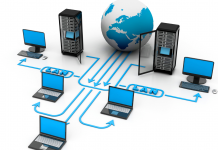
Cloud technology is a big deal, but what does it mean for you?
Cloud technology is a term that’s thrown around in the tech industry a lot, but what does it mean for you? And why should you care?
The short answer is that cloud technology is a way of storing and accessing data on remote servers. It’s a way of centralizing all your information in one place so you can access it from anywhere at any time.
It’s also cheaper and more efficient than traditional methods of storing data—and it comes with some pretty awesome benefits. Let’s take a closer look at how cloud technology works and what it means for your business.
What is Cloud Technology?
The term “cloud computing” refers to a style of remote data and processing services delivered over the internet to individual computers and other devices on demand. It’s a blueprint for providing on-demand, anywhere-in-the-world access to a shared pool of flexible computing resources via a network (e.g., networks, servers, storage, applications, and services).
This cloud model promotes availability and can be rapidly provisioned with minimal management effort or service provider interaction. Cloud technologies are becoming more prevalent as organizations strive to improve their agility in the face of ever-changing business demands. The ability to quickly add or remove capacity helps businesses respond faster to market opportunities and trends while reducing costs associated with underutilized infrastructure.
In addition, by consolidating IT infrastructure across multiple locations onto a single platform managed by specialists—such as an internet hosting company—organizations free up valuable internal resources that can be better used elsewhere within the business!
How do Cloud Systems Work?
Cloud systems are a type of distributed computing where applications and data reside on remote servers accessed through the internet. This allows for greater flexibility and scalability than traditional local server deployments. How do cloud systems work? In general, cloud systems are designed to provide users with on-demand access to computational resources that can be scaled up or down as needed.
These resources may include storage, networking, processing power, and software applications. When you use a cloud system, your data is stored remotely on the provider’s servers. You can then access this data from any device with an internet connection. The main benefit of using a cloud system is that it offers increased flexibility and scalability over traditional local server deployments.
Cloud providers typically charge customers based on their usage of these resources (e.g., by the hour or month). This pay-as-you-go pricing model makes it easy for businesses to budget for their IT needs without having to make large upfront investments in hardware and infrastructure!
Public vs Private Cloud Systems
Public cloud is a type of computing where resources are provided over the internet. Private cloud is a type of computing where resources are provided over a private network. The key difference between public and private clouds is who has control over the infrastructure. With public clouds, the provider (such as Amazon Web Services or Microsoft Azure) owns and manages the infrastructure. This means that customers do not have direct access to underlying servers or storage systems.
Instead, they access services through an application programming interface (API). API calls are made from within customer applications running on their own servers, which then interact with cloud-based resources as needed. In contrast, private clouds give customers direct control over server hardware and other infrastructure components. Customers can deploy their own applications on this hardware or use it for other purposes such as development or testing environments.
The degree of control that customers have over infrastructure is the key difference between public and private clouds. Public clouds are designed for customers who want to outsource all management tasks to the provider. Private clouds are designed for those who want more control and flexibility in how they use cloud resources.
Advantages of Cloud Technology
The cloud has a number of advantages over traditional on-premises infrastructure. These include:
- Cost savings: The cloud is typically more cost-effective than on-premises infrastructure, due to the economies of scale achieved by service providers.
- Flexibility and scalability: The cloud can be easily scaled up or down to meet changing demands, without the need for expensive hardware upgrades.
- Increased productivity: Cloud-based applications and services can boost employee productivity by enabling them to access data and resources from anywhere at any time.
- Enhanced security: Cloud service providers offer robust security features and technologies to protect data and applications from threats.
- Disaster recovery: The cloud can provide an effective disaster recovery solution, with quick and easy access to backup data and resources in the event of a system failure or outage.
- Green computing: The cloud can help organizations reduce their carbon footprint and energy consumption, as they no longer need to maintain on-premises infrastructure.
Are There any Potential Drawbacks?
There are a few potential drawbacks to cloud technology that organizations should be aware of before making the switch.
- One such drawback is data security and privacy concerns. While most reputable providers take great care to secure their customers’ data, there have been instances where sensitive information has been leaked or hacked.
- Another issue is vendor lock-in, which can occur when an organization becomes too reliant on one particular provider and find it difficult to switch to another if needed. Additionally, some businesses may experience disruptions in service if their chosen provider experiences technical difficulties or goes out of business entirely.
- Finally, clouds can be expensive to set up and maintain, especially for larger organizations with complex needs.
The Bottom Line
Cloud technology is the future of our world. It’s already changing how we work and live, but it’s still so new that we don’t quite know what to expect from it yet.
Cloud computing makes all kinds of things easier: you can access your files from anywhere, and you don’t have to worry about backing up your data or dealing with physical storage space.
Cloud technology also makes sharing information easier than ever—whether you’re sharing files with co-workers or collaborating on a project with students halfway across the world. Cloud computing is here to stay, and we’re excited to see where it takes us next!




